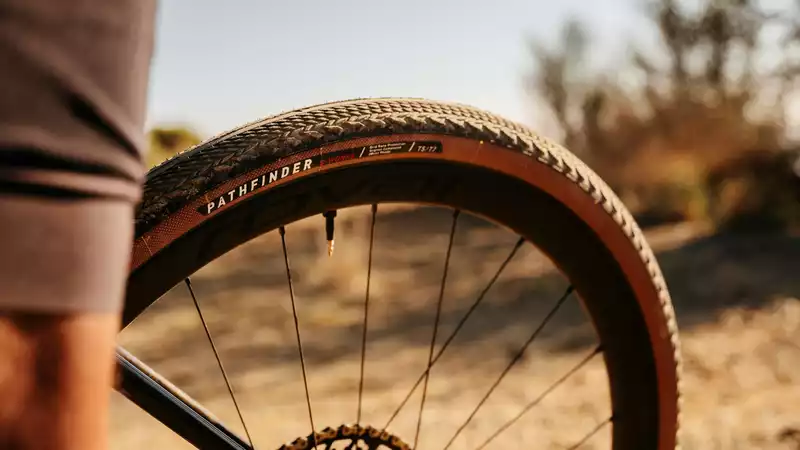With the release of the new S-Works Pathfinder, Specialized has improved the race-winning credentials of an already impressive tire. Touting the Pathfinder Pro as "the winningest tire on gravel" is a bold claim, both linguistically and in terms of results, given the diversity of riders who call it "gravel," but the Pro version has been heavily at the point end of famous gravel races such as Unbound Gravel featured, with Ian Boswell and Lawrence ten Dam taking first and second place in the men's race, respectively. It was also featured on what I think is the coolest painted professional gravel bike ever, the retro looking "rock combo" inspired Specialized divertissement.
The Pathfinder Pro is already on the list of best gravel tires, but what changes did Big S make to the platform for the S Works version?
Like the best gravel bikes, and honestly, like almost every other aspect of the performance cycling world, the new S-Works Pathfinder is said to be lighter and faster.
The 'Pro' version was already race-oriented, but the S-Works Pathfinder is a more race-specific option: unlike the "Pro" version, which comes in 650b and multiple widths, the S-Works Pathfinder is only 700c x 42mm.
Weight is an ever-present competition in the cycling industry, and this tire is no different. At 105 g lighter than the equivalent "Pro" tire, the rotational weight is definitely reduced. In the pursuit of speed, the tread compound has been changed to a dual compound, with a stiffer center to reduce rolling resistance when going straight and stickier shoulders to prevent the rubber sides from dropping when leaning hard
.
The casing is the final key point of difference. Named "grid lacing," the actual details regarding thread count are not well known. From trends, it is likely that it is more supple than the endurant casing offered in the "pro" line, further reducing rolling resistance. Since supple race casings are often more fragile at the same time, it is encouraging that Specialized has chosen to retain the BlackBelt puncture-resistant strips throughout the tread. The sidewalls are also said to be resistant to sharp flint, an indication that Emporia has its eye on the flint road.
There are no changes to the tire tread pattern, just the rubber compound. The center is slick, suggesting high-speed rolling performance on paved and hard-packed surfaces, and the sides are progressive knobs, which respond when the road surface becomes loose. However, while the pattern remains the same, the tread depth is slightly shallower, making it a lighter, faster rolling tire.
Given its racing pedigree, there is no doubt that this would be a fast tire, but perhaps best suited to the American ideal of "gravel" (wide, dry fireroads in the mountains of California) and less so to the soup of the bridleway in the British winter. They may not be the best choice.
The price per tire is set at £50.00, $60.00, €60.00, or A$95, depending on where in the world you buy them.


Comments